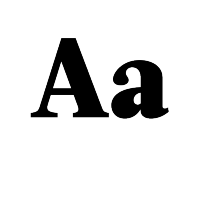

In 1967, he undertook a 40-hour part-time Diatype training course at H. Berthold AG in the evenings. Initially, the work he composed was printed via letterpress. In 1963, Alexander Nagel began an apprenticeship as a typesetter at a job-printing house in West Berlin’s Tempelhof district. The H. Berthold AG Photo-typesetting Studio A transcript of the first film (the interview with Manfred Weber) and his tour of the H. Berthold AG headquarters is already available as a PDF-download (in German). That will feature a tour of the former H. Berthold AG company headquarters. Over the next few months, a sequel will be published for the museum’s previous interview with the type caster Manfred Weber. Later, he founded the Nagel Fototype company, which eventually brought him to MetaDesign in Berlin. In addition to working at other companies, his career brought him to H. Berthold AG. As a young man, Alexander Nagel trained as a typesetter. Alexander Nagel talks about this transition in the second online video interview from the series. In phototype, compositors used different tools: font-matrix discs, hand drawings and cut friskets, letterforms saved onto glass or in computer memory, etc. For larger-sized texts, wood types and types made with H. Berthold AG’s Plakadur process were often used. Through the end of the 1970s, it was still common in Germany to print from type and clichés cast in lead or brass. This situation was new for many people involved, even though the transition was carried out somewhat later than in the United States, which can be explained above all by the Second World War and its aftermath. In West Germany at the end of the 1950s, including West Berlin, the materials used in the typesetting and printing processes began to change fundamentally. It also made many changes, innovations, and – above all – knowledge transfers possible. Yet, what happened back then in the graphics industry was just extreme, in terms of what was revolutionized there.” The graphics industry was not just in a passive state of flux.

The job you once had won’t stay the same.

Weber worked as a type caster at H. Berthold AG from 1960 until 1967, and he noted that “there had always been changes at the company: structural, personnel, there was always change. The series title “Constant Change” comes from a statement made by Manfred Weber, the first person interviewed for it. Its Printing and Paper department just published the second of a five-part video-interview series. The Deutsches Technikmuseum is a technology museum located near the center of Berlin. Typefounding and Phototype: A Berlin interview series remembering H. Berthold AG The company filed for bankruptcy in 1993. By the 1970s, fonts and machinery for photo-typesetting were its prominent business. As Alexander Nagel recounts in the video embedded below, H. Berthold AG branched out into photo-typesetting in the late 1950s. For a time in the 1920s, it even claimed to be the largest typefoundry in the world.

Over the subsequent decades, H. Berthold AG became one of Germany’s largest typefoundries. That company was founded by Hermann Berthold in Berlin in 1858. This article, written as part of the efforts to highlight a large Berlin type specimen digitization project funded by digiS, centers around H. Berthold AG. Although its text is only available in German, the issue – available as an 8-page PDF – offers an excellent summary of the city’s type-making activities. In 2018, the Berliner Morgenpost published a special issue of the Berliner Illustrirte Zeitung on the occasion of what proved to be the last TYPO Berlin design conference. Type design is still a very active design activity within Berlin today. Germany’s capital city has a rich tradition of making typefaces.


 0 kommentar(er)
0 kommentar(er)
